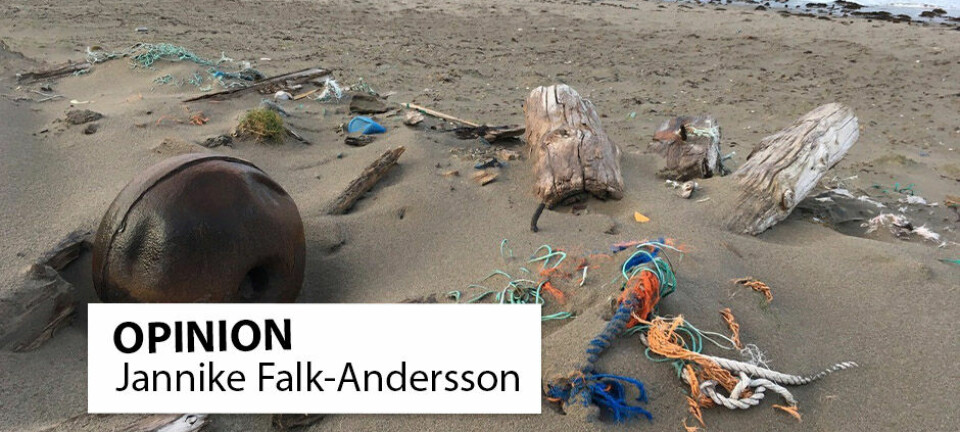Share your science:

Rising concerns about marine health call for better knowledge of marine microbial communities
SHARE YOUR SCIENCE: Unlocking the mysteries of marine microbial communities can help us make better decisions on marine resource management.
Oceans cover a significant portion of the Earth's surface and contribute 70 per cent of the planet's oxygen production. Considering the crucial role oceans play in bio-geochemical processes, it's surprising how little we know about their microbial ecosystems.
This is significant in the context of Norway, especially considering its contribution to the Norwegian economy and sustainability. In the context of rising concerns about marine health, exploring marine sediments and the sediment microbiota can reveal a lot about the marine ecosystems.
A new way for monitoring the seafloor
Clean seafloors have a high level of species diversity, whereas polluted seafloors show remarkably reduced microbial diversity. But we do not know enough.
Analysing the microbial diversity and composition of seafloor sediments serves as a valuable tool for gaining insights into biological mechanisms, impacts of pollution, and the monitoring of marine health.
Though we are dealing with the potential for huge human impact, we don’t have a rapid and efficient microbiological monitoring system for marine health
Seafloor sediment refers to an ocean bottom layer composed of a variety of components that have accumulated over time, including organic compounds, minerals, and debris. The seafloor sediment microbiota is exceptionally diverse and remains largely unknown to the research community.
Though we are dealing with the potential for huge human impact, we don’t have a rapid and efficient microbiological monitoring system for marine health. Currently, the benthic or seafloor sediment health is assessed using manual methods, which are extremely time consuming.
Hence, implementing an environmental DNA (e-DNA) based method, along with current manual methods, would help us in frequent and rapid on-site monitoring of aquaculture stations. This is the rationale behind research projects like AQUAeD, which aims to decipher the microbial health of concerning aquaculture sites.
Polluted seafloors are less diverse
Recent studies suggest that there is a significant association between benthic health and microbial diversity. The clean seafloor sediments display a high level of species diversity, whereas polluted seafloor sediments show remarkably reduced microbial diversity.
For instance, the bacteria Sulfurovum is often found in high abundance in contaminated regions and is known for facilitating decomposition of sulphur and nitrogen compounds. By contrast, certain microbial groups, like archaea, exhibit a strong association with clean seafloor sediments and are rarely found in contaminated areas.
However, we still need more research on the benthic ecosystem to understand the specific species' contributions and related biological mechanisms in these habitats.
In our seafloor sediment studies, we frequently notice that 60 to 70 per cent of the total species are uncharacterised or novel. This implies that it is high time to investigate these unidentified microorganisms inhabiting the extensive marine ecosystem.
This exploration could potentially address the questions about their identity, composition, potential benefits, pathogenic qualities, state of dormancy, and the possibility of becoming active after a certain period.
A need for on-site monitoring
Knowledge of marine microbial communities could be vital in an array of specific and broad settings. In the AQUAeD project, we aim for on-site monitoring of the impact of aquaculture enterprises on marine ecosystems, using the microbial composition of seafloor sediments (focusing on bacteria and archaeal communities for now) and latest technologies.
The initiative also aims to create bioinformatics approaches for analysing seafloor sediment microbiome data. This might greatly speed up the e-DNA based analysis and serve as a starting point for resolving various technical challenges in establishing this type of analysis.
Guidance in political decision-making
In a broader perspective, this knowledge can be a potential asset in understanding the associations between marine ecosystems and various environmental catastrophes such as global warming. The outcomes could thus serve as a guidance in political decisions concerning environmental and sustainability regulations.
Increased public and political awareness of environmental pollution and its prevention could lead to greater financing and, thus, create solutions to the aforementioned problems.
Recent advances in marine research call for further microbiome studies. This may ultimately lead us to the goal of sustainable enterprises and healthy ecosystems. I believe we have only scratched the surface of the iceberg, and there is an infinite universe of microbiomes in the marine ecosystem waiting to be explored.
Further reading:
Share your science or have an opinion in the Researchers' zone
The ScienceNorway Researchers' zone consists of opinions, blogs and popular science pieces written by researchers and scientists from or based in Norway.
Want to contribute? Send us an email!






























